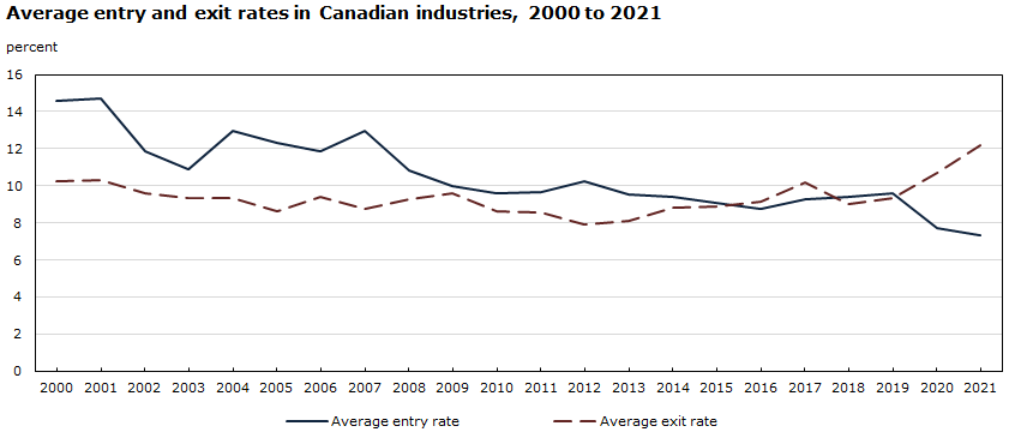
Weaker competition a contributing factor to reduced investment in workers, finds report

Canadian employers are investing less money per worker compared to 15 years ago, according to a recent report from Statistics Canada (StatCan).
Overall, investment in workers dropped by 20% between 2006 and 2021. This equates to $628.80 less per employee for each company.
The decline in investment is largest among large firms. These companies spent 70% less – $454.10 less per worker – in that timeframe.
For medium-sized firms, the decline was 22% ($125.40 per worker). It was 8% ($49.20 per worker) for small employers.

One in five (20%) Canadian employers have had new talent slip through their fingers in the last six months, because they “can’t compete on salary and benefits”, according to a report released in November 2023.
One factor that contributed to the decline in investment per worker is the decline in the number of companies starting up, according to StatCan’s report titled Investment Slowdown in Canada After the Mid-2000s: The Role of Competition and Intangibles.
"Economists always believe that competition promotes investment. When you look at our data, there's a decline in the share of new firms," said Wulong Gu, the study's author in a report from The Canadian Press published on Yahoo News.
The entry rate in Canadian industries in 2001 was 14.70%. In 2021, it fell to 7.34%, according to StatCan data.

There is uncertainty in the estimated entry rate in the early 2000s. But the steep decline in the entry rate could be attributable to the bursting of the tech bubble in the early 2000s, according to Gu’s report.
“An increase in industry concentration and a decline in firm entry rates had a negative effect on firm investment, and the effect was relatively larger among small firms. This result is interpreted as evidence that a decline in competition reduces investment, or competition promotes investment among firms, especially among small firms,” said Gu.
“For the period after 2006, industry concentration changed little, while firm entry rates declined sharply. These declining entry rates contributed to 30% of the decline in investment per worker after 2006.”
On June 23, 2022, the federal government enacted amendments to the Competition Act, which made it a criminal offence for parties to enter into wage-fixing and no-poaching agreements. These amendments came into force on June 23, 2023.
The slowdown in investment also coincided with a shift toward intangible assets such as brand equity and patents, which national statistical agencies don't record as investments, The Canadian Press noted.